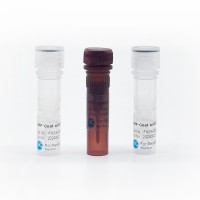Engineering Whole-Cell Biosensors with No Antibiotic Markers for Monitoring Aromatic Compounds in the Environment
互联网
551
A cornerstone of Synthetic Biology is the engineering of gene regulatory networks. Construction of such biological circuits has been used not only to elucidate the dynamics of gene expression but also for designing whole-cell biosensors that translate environmental signals into quantifiable outputs. To this end, distinct components of given regulatory systems are rationally rewired in a way that translates an external stimulus (for instance, the presence of one chemical species) into a measurable readout typically fluorescence or luminescence. Various biosensors for BTEX (a mixture of benzene, toluene, ethylbenzene and xylenes) are based on XylR, the main transcriptional regulator of the TOL pathway of Pseudomonas putida mt-2. In the presence of its natural effectors (e.g., m- xylene, toluene or 3-methylbenzylalcohol), XylR triggers expression of the upper pathway genes by means of the Pu promoter. Available biosensors combine the xylR gene and a direct fusion between the cognate Pu promoter and the luxCDABE operon, all components stably integrated in the chromosome of P. putida . A versatile development of the same biosensing concept is described, aimed at increasing the sensitivity of the genetic circuit toward XylR inducers. The new platform utilizes mini-transposon vectors tailored for engineering an artificial expression cascade that operates as an amplifier of the signal/response ratio of the biosensor. This strategy was applied to the construction of a strain that carries a transcriptional fusion between the Pu promoter and T7 RNA polymerase (which becomes under the control of XylR and its effectors), along with a T7 promoter controlling expression of the luxCDABE operon. This simple regulatory architecture produced a dramatic increase of bioluminescence emission in respect to the strain that carries only the direct fusion between the Pu promoter and the luxCDABE reporter.









